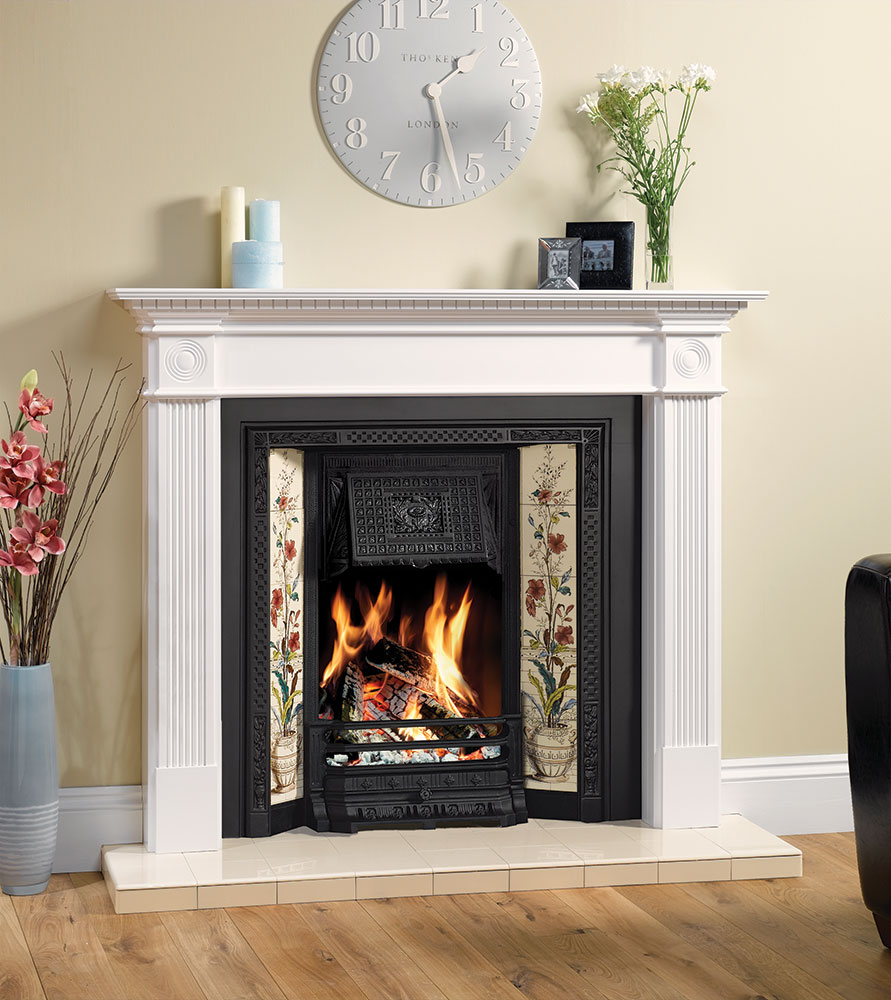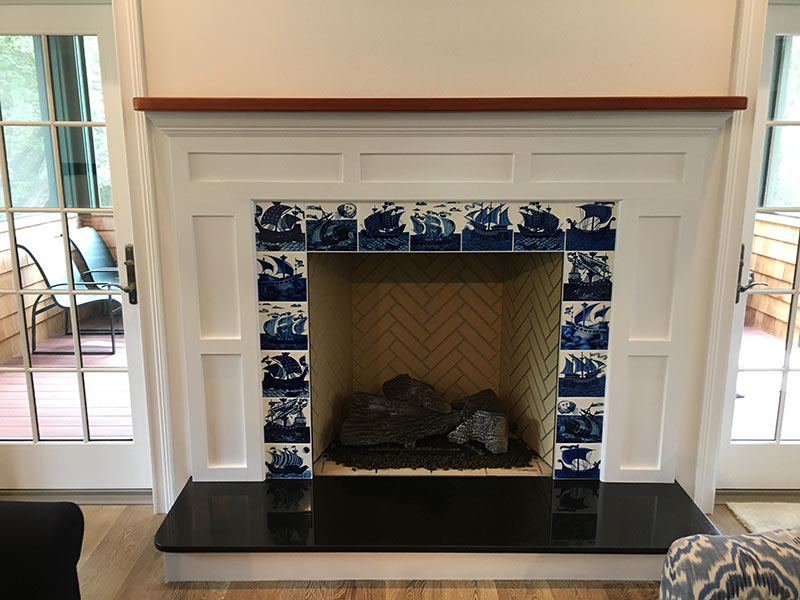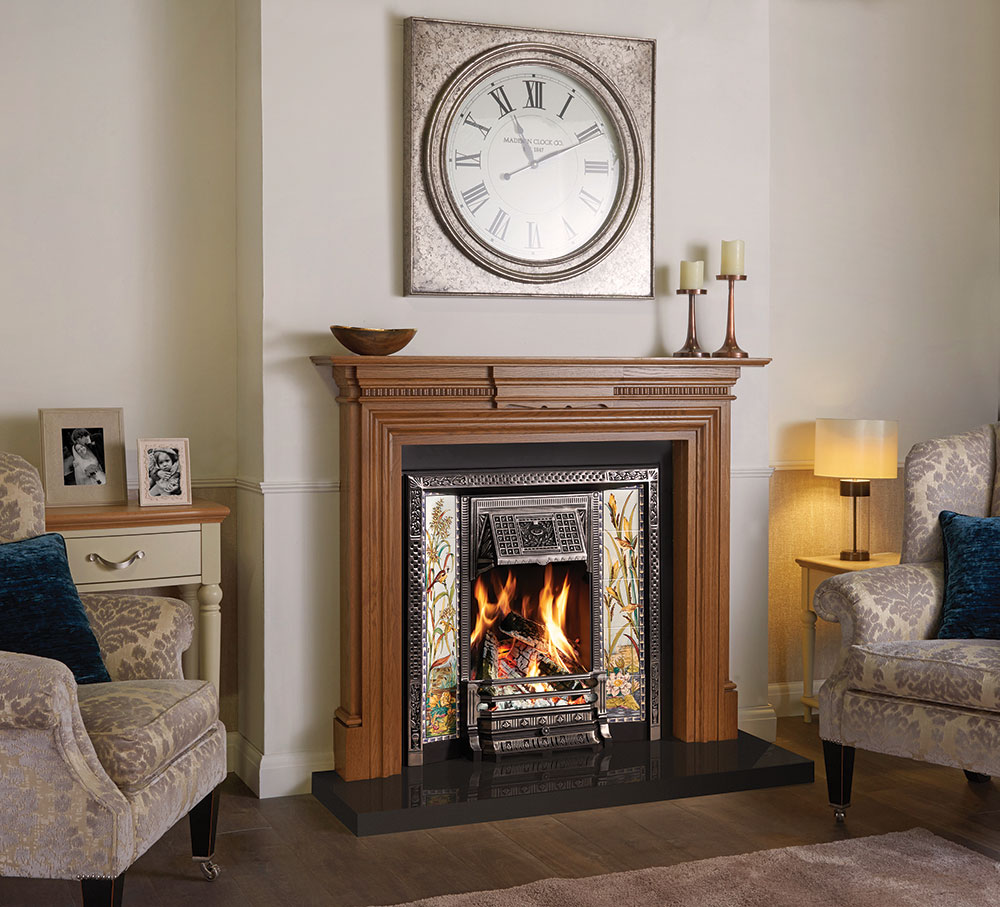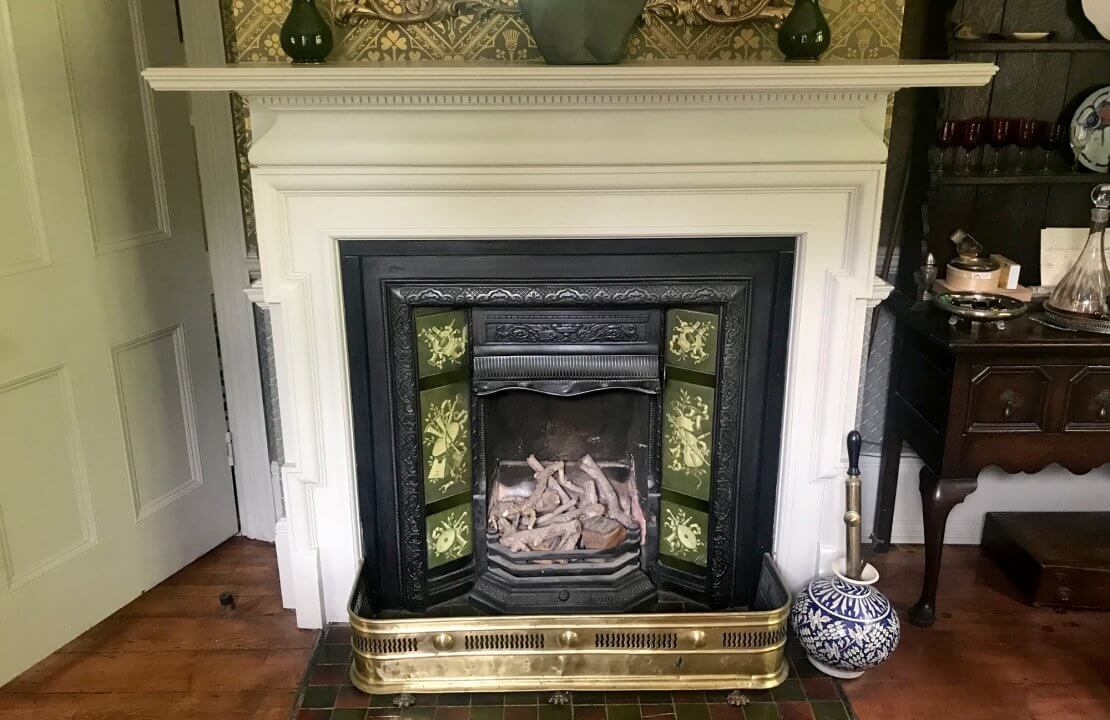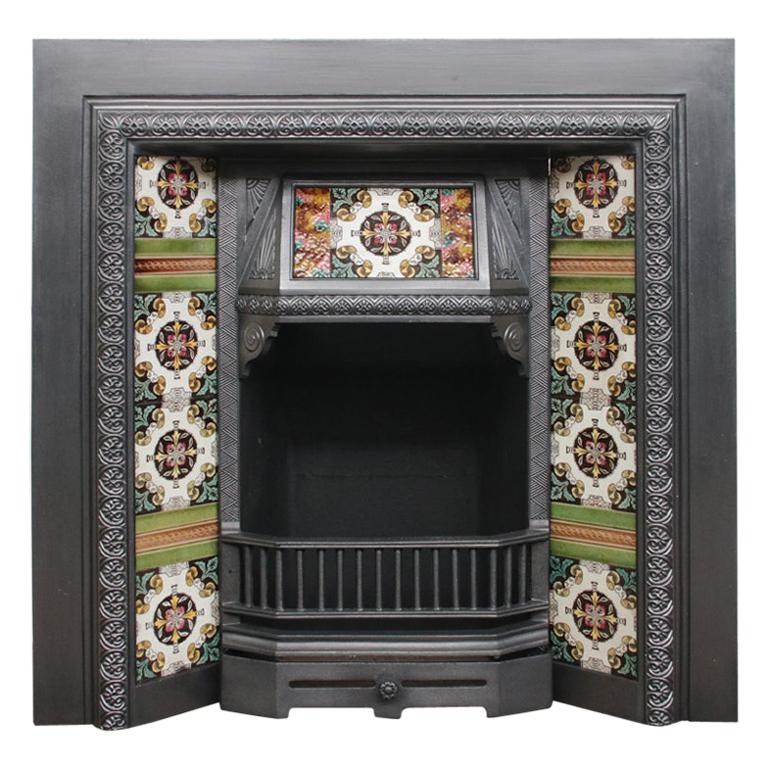Victorian Tiled Fireplace Surround
Victorian tiled fireplace surrounds represent a blend of classic craftsmanship and historical character. These fireplace designs date back to the late 19th century and continue to be appreciated for their ornate detailing, rich color palettes, and period-authentic aesthetics. Whether you’re restoring an old home or adding antique charm to a newer space, Victorian tiled surrounds bring warmth, sophistication, and storytelling to your living area.
Understanding the Historical Roots of Victorian Tiled Fireplaces
- The Victorian era was marked by a growing middle class and a renewed interest in decorative arts, and this extended into home design. Fireplaces served both a practical and decorative purpose, becoming a central element in drawing rooms and parlors.
- Tiled surrounds started gaining popularity in the mid-1800s with the influence of Gothic Revival and later the Arts and Crafts Movement. Tiles were often hand-painted and incorporated detailed motifs such as florals, geometric shapes, and scenic landscapes.
- The use of mass production during the Industrial Revolution made decorative tiles more affordable, allowing a wider portion of the population to incorporate these stylish elements into their homes. Ceramic tiles were typically used, prized for their durability and ease of cleaning.
- Victorian tiled fireplace surrounds varied depending on region and social status. Wealthier homeowners opted for custom tilework, while more modest homes had simpler, yet still beautiful, surround designs with repeating patterns.
- The most common tile manufacturers of the time included Minton, Maw & Co., and Doulton. Their tiles were known for their rich glazes and intricate detail. Collectors today still seek out these antique tiles for restoration work.
- These fireplaces weren’t just about aesthetics—they reflected the values and aspirations of the Victorian household. A beautifully tiled fireplace was a symbol of refinement, culture, and attention to the home’s interior environment.

Key Design Features That Define a Victorian Tiled Surround
Victorian fireplace tiles were usually arranged on either side of the cast iron insert. They came in sets known as “tile panels” or “runs,” and they flanked the firebox, adding color and decoration to the overall design.
A hallmark feature is the presence of a cast iron insert with intricate patterns—sometimes floral, other times more geometric—paired with enameled or hand-painted tiles. The contrast between metal and tile created visual richness.
Tile colors were bold and earthy. Common hues included emerald green, burgundy, cobalt blue, mustard yellow, and soft creams. These tones worked well with the darker wood mantels typically found in Victorian homes.
Floral motifs were very popular, especially stylized lilies, poppies, and roses. These designs were influenced by naturalistic themes, often stemming from the Pre-Raphaelite movement and the broader Arts and Crafts aesthetic.
Some tiles depicted scenes such as pastoral landscapes, medieval tales, or classical myths. These pictorial tiles made the fireplace not only a heating element but also a visual narrative centerpiece in the room.
Symmetry played a key role in Victorian tile design. The layout often featured matching tiles on both sides of the insert and a neatly framed mantel. This balance provided a sense of order and elegance typical of Victorian interiors.
Choosing the Right Tiles for Restoration or Reproduction
If you’re restoring an original Victorian fireplace, sourcing authentic period tiles is ideal. Antique dealers, architectural salvage yards, and online marketplaces often carry genuine 19th-century tiles.
For homeowners who prefer new but period-accurate designs, many companies now produce high-quality reproduction tiles. These are made using traditional techniques and color palettes to preserve historical accuracy.
Tile sizing is important. Victorian tiles typically measured 6×6 inches or were narrow vertical strips measuring around 6×2 inches. Choosing the right dimensions ensures your layout will align with the cast iron insert.
Be sure to choose tiles that can withstand heat if they’re close to the firebox. Most reproduction tiles are made with this in mind, but it’s always best to confirm fire-resistance specifications before installation.
Look closely at the glaze and finish. Victorian tiles often have a rich, glossy surface that deepens the color. Modern matte tiles may not give you the same depth and reflective quality.
It’s a good idea to mix plain field tiles with decorative ones to create balance. Too many pictorial or floral tiles can overwhelm the surround. Use feature tiles for impact and let plain tiles ground the design.
Installation Considerations and Fireplace Structure
The tiled surround is only one part of the fireplace assembly. You’ll also need to consider the cast iron insert, fireback, hearth, and mantel. All elements should harmonize in style and proportion.
A professional installer with experience in historical restoration is recommended. Older homes may require structural reinforcement or chimney repairs before new tiles can be added safely.
Check local building codes and fire safety guidelines. In some cases, you’ll need a heat-resistant backing board or special adhesives to ensure the tiles are secure near the fire.
If you’re retrofitting a fireplace where the original surround is missing, consider installing a cast iron insert with a reproduction wood mantel and newly sourced Victorian-style tiles. This creates a cohesive vintage look.
Layout is crucial during installation. Dry-lay your tiles before fixing them in place to make sure the pattern aligns correctly and the symmetry is preserved.
Grout color can either blend or contrast with the tiles. Historically, grout lines were kept minimal and light-colored to avoid distracting from the tile artwork. Stick with a subtle shade to maintain authenticity.
How to Maintain and Care for a Victorian Tiled Fireplace
Victorian tiles are durable but not invincible. Regular cleaning with a soft cloth and mild soap helps prevent soot buildup and keeps the colors bright. Avoid harsh abrasives that might scratch the glaze.
If tiles crack or become loose over time, it’s essential to repair them promptly. Small hairline cracks can be stabilized with clear epoxy. Loose tiles should be carefully removed and reset with heatproof adhesive.
Sealing may be necessary if your tiles are unglazed or if you’re using reproduction tiles with porous surfaces. A good sealant will help resist moisture and discoloration from smoke.
The grout between tiles should also be inspected regularly. Re-grouting can restore a clean appearance and prevent water or ash from seeping behind the tilework, which could weaken the bond.
Consider installing a fire screen or decorative cover when the fireplace is not in use. This keeps dust and debris out while showcasing the beautiful tilework.
Periodic professional inspections help extend the life of your surround. A fireplace specialist can check for heat damage, chimney efficiency, and tile integrity, ensuring your surround stays beautiful and functional for years to come.
Common Mistakes to Avoid
Using modern tiles without checking historical accuracy: Modern tiles often miss the glaze quality or motif detail that defines Victorian design.
Overdoing the color palette: Victorian designs are bold, but mixing too many colors can make the fireplace look disjointed.
Neglecting fireplace proportions: Surrounds that are too small or too large for the insert throw off the balance of the entire wall.
Incorrect installation near heat sources: Not all tiles are heat-rated. Using regular ceramic can lead to cracking or discoloration.
Skipping surface preparation: Tiles need a level, fire-safe backing to ensure longevity.
Not sourcing a proper mantel: The mantel ties the whole design together. Choosing one that clashes in style undermines the fireplace’s historical look.
Can I use Victorian-style tiles on a non-functional fireplace?
Yes, and it’s actually quite common. Many homeowners use tiled surrounds purely for decorative purposes. You can install a faux insert or keep the firebox empty and still enjoy the aesthetic. Just be sure to use tile adhesive suitable for indoor vertical surfaces.
Are original Victorian tiles still available for purchase?
Yes, though they can be expensive. Architectural salvage shops, antique fairs, and online marketplaces like eBay or Etsy often have authentic tiles from the 1800s. If you’re aiming for historical precision, sourcing a few originals for a feature panel works well.
How do I know if my fireplace is original Victorian?
Look for details like a cast iron insert with decorative motifs, tile panels flanking the firebox, and a wooden or marble mantel. The tile patterns and colors, along with the overall structure, can indicate authenticity. Consulting a historical home expert can help confirm its origin.
What’s the best way to clean soot off antique fireplace tiles?
Use a soft sponge with warm water and a bit of mild dish soap. Avoid harsh cleaners or scouring pads. For persistent stains, try a paste of baking soda and water, but test a small area first. If the tiles are fragile, consult a restoration expert.
Can I install Victorian tiles around a gas fireplace?
Absolutely, as long as the tiles are rated for high temperatures. Gas fireplaces typically produce less soot and are easier on tilework than wood-burning ones. Just ensure the tile layout allows for proper venting and follows the manufacturer’s safety clearances.
Are reproduction Victorian tiles worth the investment?
Yes. Modern reproductions are made using traditional methods and can closely mimic the original aesthetics. They are also easier to source, more affordable, and safer to use near active fireplaces. If you value visual accuracy and ease of installation, they’re a strong choice.
Fantastic Photos open Fireplace Tile Tips The full time for those
Victorian and Arts and Crafts Fireplaces, William Morris Tiles
Victorian Tiled Fireplaces – Stovax Traditional Fireplaces
How to restore a Victorian fireplace
Reclaimed Victorian Tiled Fireplace Grate
Related Posts:

